Space
The planet Mercury; Everything you need to know about the closest world to the Sun
Published
3 months agoon


Mercury; Everything you need to know about the closest world to the Sun
Mercury is the closest planet to the sun and the smallest planet in the entire solar system. This small, hollow planet has no moons and orbits the Sun faster than any other body. After Earth, Mercury has the highest density in the solar system and the diameter of its huge metallic core is between 3,600 and 3,800 km or 75% of the diameter of the entire planet. In contrast, the thickness of the outer shell of Mercury reaches 500 to 600 meters. The heavy core and composition of this planet, which contains a large amount of volatile elements, has become a puzzling mystery to scientists.
-
What does the planet Mercury symbolize?
-
How was the planet Mercury formed?
-
What is mercury made of?
-
Features of Mercury
-
Interesting facts about the planet Mercury
-
The largest temperature fluctuation in the entire solar system
-
The smallest planet in the solar system
-
Survivor of a massive asteroid impact
-
The strange orbit of Mercury
-
Polar ice cover
-
Huge iron core
-
The entire surface of Mercury has been mapped
-
The thinnest atmosphere in the entire solar system
-
Magnetic tornadoes
-
Transit of Mercury in front of the Sun
-
Discoveries of Mercury
-
Journey to Mercury
-
Mariner 10; The first mission to Mercury
-
The MESSENGER spacecraft: a new view of Mercury
-
Conclusion
What does the planet Mercury symbolize?
The name Mercury is derived from the name of the Roman god Mercury, the speedy messenger of the gods, and the Roman counterpart of Hermes, the Greek god. Since Mercury revolves around the Sun at a high speed and a Mercury year is less than three Earth months, the ancient Romans chose this name for Mercury.
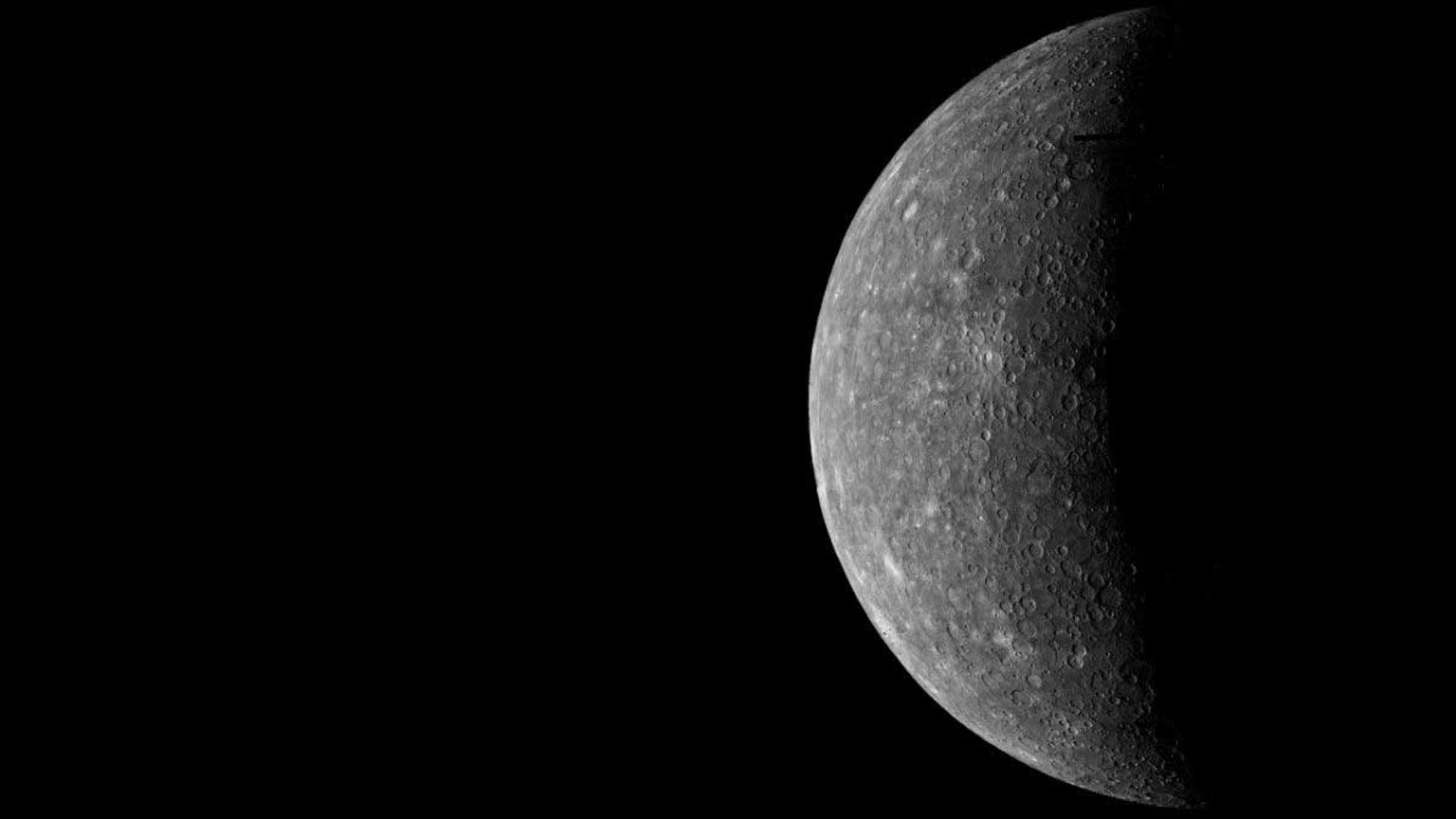 The Mariner 10 probe captured this image of the planet Mercury.
The Mariner 10 probe captured this image of the planet Mercury.
How was the planet Mercury formed?
Years after the beginning of the space age, there is still much debate about how planets formed, and scientists are still not sure how they formed. The first and most important accepted theory is the core accretion theory, which is close to reality in the case of rocky planets like Mercury. The second theory, disk instability, applies to gas planets.
Approximately 6.4 billion years ago, the solar system was a cloud of gas and dust called the solar nebula. Gravity led to the collapse of materials and their rapid rotation. Thus, the sun was formed in the center of this nebula. With the formation of the sun, the rest of the material condensed. The smaller particles joined each other due to the force of gravity and turned into larger particles. The solar wind swept away the lighter particles, leaving only the heavy, rocky material near the Sun to form rocky planets like Mercury.
Like Earth, Mercury’s metallic core formed first, and then lighter elements formed its mantle and crust. Based on the observations of outer planets, the theory of core accumulation can be considered the dominant theory of the formation of rocky planets. One of the most accepted theories about the formation of Mercury is that in the early history of the solar system, an asteroid with 1/6 the mass of Mercury and a diameter of several thousand kilometers collided with it. has done. This collision has removed much of Mercury’s crust and mantle, leaving its core as the main element. A similar process known as the massive impact hypothesis has been proposed for the formation of the moon.
According to another theory, before the Sun’s energy output stabilized early in its life, the planet Mercury probably formed from the solar nebula. In the beginning, the mass of the planet Mercury was twice the current mass, but due to the high temperatures of the early sun, a large part of the surface rocks of Mercury evaporated and formed an atmosphere of rock vapor, which was also washed away by the solar wind.
What is mercury made of?
Much of Mercury is made of iron. This planet has an inner core and a liquid metallic outer core, which are inside the mantle and crust like Earth. Mercury’s inner core is solid and similar in size to Earth’s core.
Also, instead of having a complete atmosphere, Mercury has an exosphere, which forms a very thin layer. Mercury’s exosphere is formed by solar winds and atoms from asteroid collisions. This thin atmosphere cannot protect Mercury well from cosmic collisions, that’s why Mercury is very similar to Earth’s moon and is full of impact craters.
Mercury has a solid silicate crust and a rocky mantle. The outer layer of Mercury’s core is composed of liquid iron sulfide that surrounds the solid inner core. Mercury is the second most dense planet in the solar system after Earth. The density of Mercury can be used to find out the details of its internal structure.
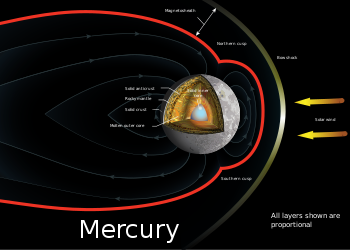

Internal structure and magnetosphere of the planet Mercury
Features of Mercury
A year of Mercury is equal to 88 days and a day is 59 Earth days. This planet rotates slowly around its axis but has the highest speed in the orbit of the Sun.
The surface of Mercury is similar to the surface of Earth’s moon, it is full of impact craters due to asteroid bombardment early in the formation of the solar system. Mercury’s craters and surface features are named after famous artists, musicians, and writers, such as Dr. Seuss, famous children’s author, and dancer Alvin Alley.
Very large impact basins such as Caloris with a diameter of 1550 km and Rakhmaninov with a diameter of 306 km were created by asteroid collisions in the early formation of the solar system. Although there are many flat lands on Mercury, some craters are hundreds of kilometers high. These rocks were formed when the interior of Mercury cooled and compressed over several billion years.
Mercury is continuously contracting
Much of Mercury’s surface appears grayish-brown in color. Also, bright bands called “crater rays” can be seen on the surface of this planet. These streaks were formed when an asteroid or comet hit the surface of Mercury.
Approximately 4 billion years ago, an asteroid 100 km across collided with Mercury. The power of this collision was equal to one trillion megatons of bombs. As a result of this collision, a large crater with a diameter of 1,550 km was created, which is called Kaluris Basin today. The width of this crater is the size of the state of Texas. As a result of another collision, the rotation axis of this planet was deviated.
 A mosaic image of the Calris basin
A mosaic image of the Calris basin
Mercury has not only shrunk in the past; Rather, its contraction continues today. This small planet is made up of a plate that covers its iron core. This core is cooling, and as it cools, the volume of the planet also decreases. This process has led to the crumpling of the planet’s surface and has created clot-like rocks and valleys.
Interesting facts about the planet Mercury
The largest temperature fluctuation in the entire solar system
Although Mercury is the closest planet to the Sun, its surface can get very cold due to the lack of an atmosphere to trap heat. The temperature of this planet exceeds 430 degrees Celsius during the day, but it can reach minus 180 degrees Celsius during the night. Thus, with a temperature difference of 600 degrees Celsius, Mercury has the largest temperature fluctuation in the entire solar system.
The smallest planet in the solar system
Mercury is the smallest planet in the solar system with a diameter of 4876 km and is only slightly larger than the Earth’s moon. Saturn’s moon Titan and Jupiter’s moon Ganymede are both larger than Mercury. Pluto, which was considered the smallest planet in the solar system for many years, was replaced by Mercury after it was removed from the list of planets in the solar system in 2006.
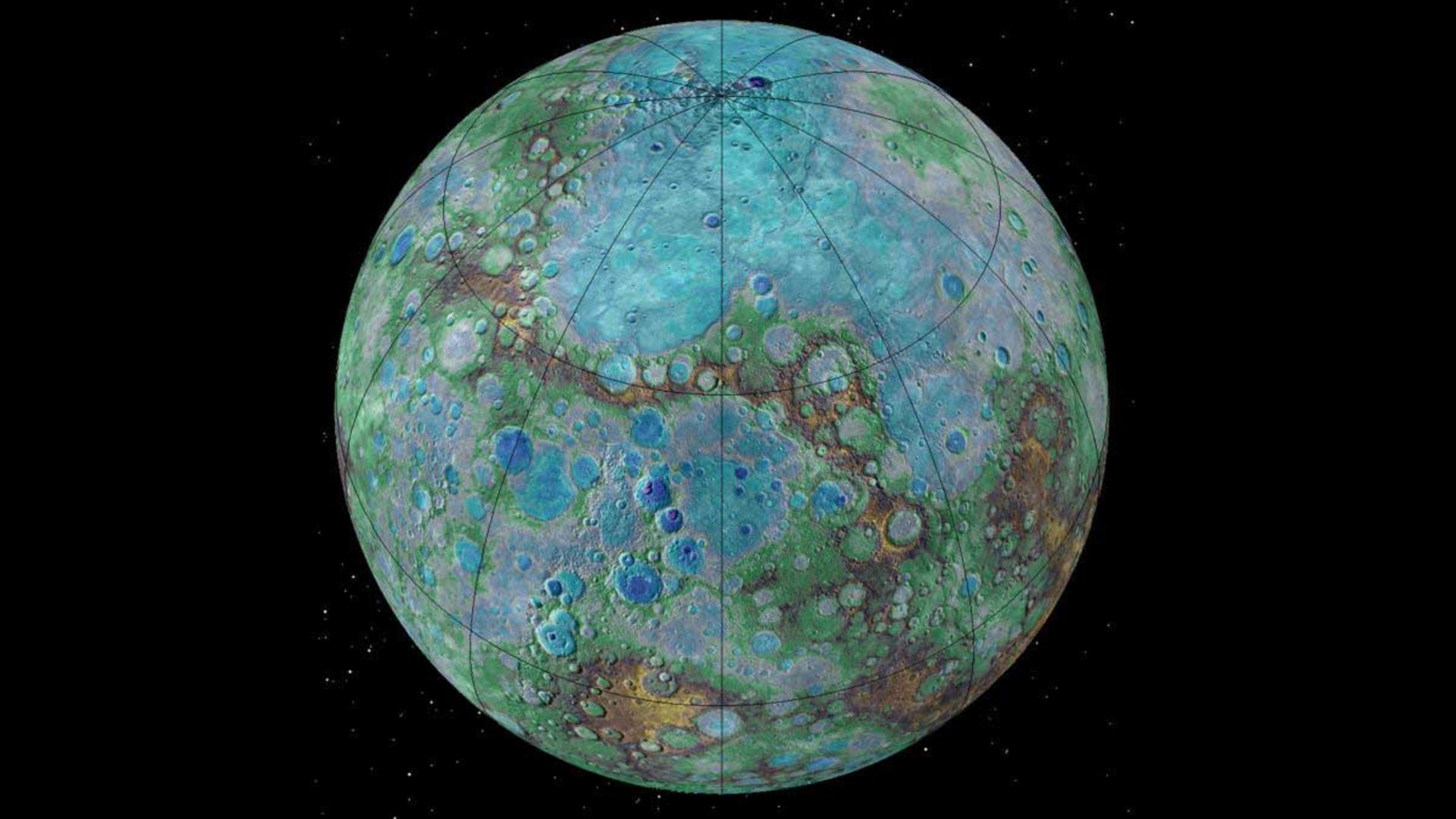 Mercury is the smallest planet in the solar system and may be shrinking today.
Mercury is the smallest planet in the solar system and may be shrinking today.
Survivor of a massive asteroid impact
Due to a lack of atmosphere and proper protection, the planet Mercury was not spared from the impact of asteroids in the early life of the solar system. The surface of this planet, like the moon, is full of impact craters.
The strange orbit of Mercury
Mercury completes the orbit of the Sun once every 88 days, and in other words, it travels 47 kilometers per second. This planet is the fastest planet in the solar system, But Mercury is not only fast but has an elliptical orbit. The distance of this planet to the sun can be close to 47 million kilometers and the farthest distance from the sun is 70 million kilometers.
Polar ice cover
In 2012, NASA’s MESSENGER probe discovered water ice inside Mercury’s impact craters. In 2017, it was confirmed that Mercury has more ice cover in its northern polar regions. The hypothesis of the presence of ice on Mercury was first proposed in the 1990s by observing reflective regions near the poles from ground-based telescopes.
Considering the close distance of Mercury to the Sun, the existence of ice on its surface seems strange; But this planet has a slight axial deviation, which causes its polar regions to receive a little sunlight directly, and some impact craters are also plunged into complete darkness.
 Mercury’s polar ice cap is shown in yellow.
Mercury’s polar ice cap is shown in yellow.
Huge iron core
Mercury has a huge iron core with a diameter of 3,600 to 3,800 km, which makes up nearly 75% of the planet’s diameter. In fact, the outer layer of Mercury is only 500 to 600 km thick. Much of Mercury’s core is made of iron, and scientists aren’t sure how it formed.
The entire surface of Mercury has been mapped
NASA’s MESSENGER probe orbited Mercury for more than four years and captured amazing images of it. Scientists used these images to create the first complete map of Mercury’s surface.
The thinnest atmosphere in the entire solar system
Mercury has the thinnest atmosphere among the planets of the solar system. Mercury’s atmosphere is so thin that scientists have named it the exosphere. Mercury’s exosphere is mostly composed of oxygen, sodium, hydrogen, helium, and potassium.
Magnetic tornadoes
Scientists were surprised by Mercury’s strange magnetic field. The planet is too small to host a global magnetic field. Although its magnetic field is only one percent of the strength of Earth’s magnetic field, magnetic tornadoes are common there.
Mercury’s magnetic field interacts with the solar wind, and this process results in the generation of very fast magnetic tornadoes from the solar wind plasma. When the plasma of the solar wind hits the surface of Mercury, the neutral charge atoms are moved on the surface and transferred to the atmosphere of Mercury.
Transit of Mercury in front of the Sun
The transit of Mercury in front of the Sun occurs when this planet passes directly between the Sun and the planet in front of it and the solar disk appears opposite. During the transit, Mercury is seen as a small black dot that passes in front of the large orange disk of the Sun.
The transit of Mercury in comparison with the Earth happens more often than its transit in comparison with the planet Venus and it is repeated 13 or 14 times in every century. Mercury’s transit in front of the Sun usually occurs in May or November. Previous transits have occurred on these dates: November 15, 1999, May 7, 2003, November 8, 2006, May 9, 2016, November 11, 2019, and the next transit will be November 13, 2032. A typical transition lasts only a few hours. On June 3, 2014, the Curiosity rover observed the transit of Mercury in front of the Sun, marking the first time that a planetary transit has been observed from a planet other than Earth.
Discoveries of Mercury
The oldest recorded records related to the observation of Mercury can be seen in the MUL.APIN tablets. These observations were probably made by Assyrian astronomers around the 14th century BC. Babylonian records of observing Mercury go back to the first millennium BC.
The first telescopic observations of Mercury were made by Thomas Heriot and Galileo in 1610. In 1612, Simon Marius noticed the change in brightness of Mercury according to its orbital position. In 1631, Pierre Gassendi made the first telescopic observations of the passage of this planet in front of the Sun, which had been predicted by Johannes Kepler.
Journey to Mercury
Accessing Mercury from Earth had many problems. One of the reasons for this problem was the excessive proximity of this planet to the sun. Spacecraft must have a high initial velocity to enter a Hohmann transfer orbit (an elliptical orbit used to transfer between two circular orbits in the same plane) near Mercury. The rocket fuel needed to travel to Mercury is more than the fuel needed to completely escape from the solar system; As a result, only two probes have managed to visit Mercury so far.
Mariner 10; The first mission to Mercury
Mariner 10 was the first spacecraft to visit Mercury. This spacecraft sent clear images of Mercury to Earth and managed to study the environment and surface of this planet. Mariner 10 was the first spacecraft to visit two planets simultaneously in a single mission. Despite various mechanical problems during this mission, NASA gained a lot of information from this spacecraft; Therefore, Mariner 10 can be considered as the first NASA skill maneuver in which it has become professional today.
Before Mariner 10 launched from Cape Canaveral on November 3, 1973, little was known about the neighbors of our solar system. Mariner 10 visited Venus and Mercury with remarkable speed. Astronomers of that time were curious about the high density of Mercury and the material of its core. According to the hypotheses that NASA had previously proposed, the reason for this high density was the significant concentration of metal in the core of this planet; But questions were also raised about the exact type of core and how Mercury was formed.
Mariner 10 reached Mercury on March 29, 1974. The first images received from Mariner 10 showed a deserted planet with a surface similar to the surface of the Moon, Earth’s moon. Its holes and dry ground were clear in the pictures, But one of the major differences between Mercury and the Moon is the presence of rocks and deep valleys. According to scientists, the crust of Mercury has been wrinkled over time.
The MESSENGER spacecraft: a new view of Mercury
Messenger was the first Mercury orbiter. MESSENGER, short for Mercury Surface Space Environment Geochemistry and Ranging (Mercury Surface, Surrounding Environment, Geological Chemistry, and Ranging) mission, with a weight of 453 kg, investigated the nearest neighbor of the Sun and sent information and images of how the craters formed and its mysterious landscapes. Messenger’s mission ended on April 30, 2015, after the spacecraft ran out of fuel and hit the planet’s surface.
Messenger went hunting for water ice in the poles of Mercury and managed to discover it in the polar parts of this planet. In 2014, using MESSENGER data, researchers uncovered evidence of explosions that occurred on Mercury at different times. Meanwhile, data on water ice in the Brocofio crater near Mercury’s north pole was released in 2014. In the same year, Messenger temporarily went to a height of 100 km above the planet and had a better view of Mercury from this distance.
BepiColombo, a joint mission of the European Space Agency ( ESA ) and the Japan Aerospace Exploration Agency ( JAXA ), is the third exploratory mission to Mercury in the history of the space age. The two orbiters of this probe, the European Mercury Orbiter ( MPO ) and the Japanese Mercury Magnetospheric Orbiter ( MMO ), carry 16 scientific instruments that can answer these questions: Do impact craters in the poles of Mercury really have water ice? Where does Mercury’s magnetic field come from? What are the characteristics of the strange holes on the surface of Mercury?
The BepiColombo probe also captured its first images of Mercury during a low-altitude flyby on October 1, 2021. A total of 9 low-altitude flight maneuvers are planned until 2025.
Conclusion
The planet Mercury is the smallest planet in the solar system and the closest planet to the Sun, which revolves around it at the highest speed. Mercury does not have any moons and due to its close distance to the Sun, it has a thin atmosphere called the exosphere. The orbit of Mercury is elliptical and one year lasts 88 days and one day lasts 59 Earth days. The reason for the long days of Mercury is the slow rotation of this planet around itself. So far, three probes, Mariner, MESSENGER, and BepiColombo, have visited Mercury, but there are still many mysteries about this planet


You may like
-

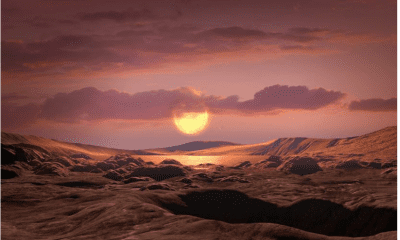


Most alien planets probably do not have day or night
-




The biography of Edwin Hubble
-

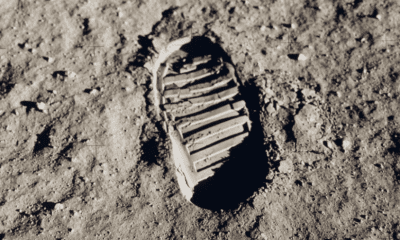


Can telescopes see astronaut footprints on the moon?
-




Can you really see the Great Wall of China from space?
-

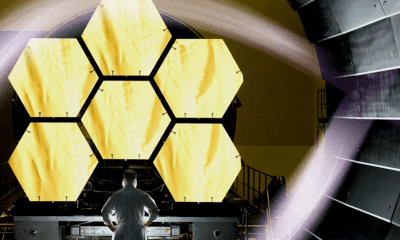


The James Webb Space Telescope; A look at the vastness of the universe
-

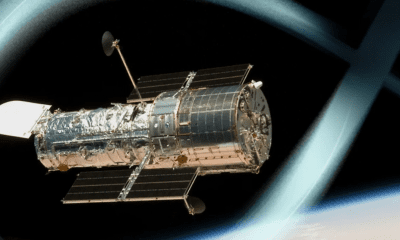


Hubble Space Telescope; A portal to the mysterious depths of the universe


Most alien planets probably do not have day or night
Do aliens sleep? You may take sleep for granted, but research suggests that many possible life-hosting planets may not have a day-night cycle. It is difficult to imagine the absence of day and night, but right now on Earth there are creatures living in lightless habitats in the depths or on the seabed, and they offer a vision of alien life without the existence of a circadian rhythm.
There are billions of potentially habitable planets in our galaxy; But how do we get to this number? The Milky Way has between 100 billion and 400 billion stars, seventy percent of which are cold and small red dwarf stars or M dwarfs.
According to a detailed survey of exoplanets in 2013, approximately 41% of red dwarf stars have a planet in their life belt. At this distance, the planet has the right temperature to support liquid water; Therefore, these planets have the potential to host liquid water.
We still do not know which of the discovered exoplanets have liquid water. However, 28.7 billion planets are only in the red dwarf life belt. We have not even considered the statistics of other types of stars like our sun.
 Planets close to red dwarfs are fatally locked to their star
Planets close to red dwarfs are fatally locked to their star
Rocky planets in the habitable belt of an M dwarf are called M Earths. M-Earths are fundamentally different from our Earth. One difference is that M dwarf stars are much cooler than our Sun. Also, M Earths are located at a close distance from their star, and for this reason, the gravitational influence of the star on them is strong.
The star’s gravity exerts a stronger force on the near side of the planet than on the far side. By creating friction, the planet’s rotation slows down until its orbital and translational rotations become synchronized over millions of years. Thus, M fields are likely to be deadlocked; So that one hemisphere of them is always facing the star and the other hemisphere is always behind it.
The year of a mortally locked planet is as long as its day. Earth’s moon also has a deadly lock on us. For this reason, we always see one side of it and cannot observe its hidden side.
A planet in mortal lock looks strange, But most possible habitable planets are of this type. Our nearest planetary neighbor, Proxima Centauri b, located in the Alpha Centauri system four light-years from Earth, is likely a fatally locked M-Earth.
As a result, unlike our Earth, M Earths have no day or night and even seasons; But terrestrial life, from bacteria to humans, has circadian rhythms corresponding to the day and night cycle. Sleep is one of the most obvious consequences of circadian rhythm.
On Earth, some creatures live in absolute darkness
The circadian cycle affects biochemistry, body temperature, cell regeneration, behavior, and much more. For example, people who are vaccinated in the morning produce more antibodies than people who are vaccinated in the afternoon; Because the response of the immune system is different during the day.
We cannot yet say with certainty how much periods of inactivity and regeneration affect life. Perhaps organisms that evolved without cyclical time never needed to rest.
If you doubt it, you can look at terrestrial organisms such as cave dwellers, deep sea life, and microscopic organisms in dark environments such as the earth’s crust and the human body that thrive in space away from daylight.
Many life forms have biological rhythms that are synchronized to stimuli other than light. Naked burrowing mice spend their entire lives underground and never see the sun, But their day and night hours are proportional to the daily and seasonal cycles of temperature and rainfall. Also, deep-sea bivalves and thermal well shrimps coordinate with ocean tides.
Bacteria that live in the human gut synchronize with melatonin fluctuations in the host’s body. Melatonin is a hormone in the body that is produced in response to darkness. Temperature changes that occur in thermal wells, humidity fluctuations chemical changes, and environmental currents can all cause biological fluctuations in the body of living organisms.
According to new research, M-Earths can have alternate cycles for days and seasons. To evaluate days and seasons on exoplanets, scientists have adapted climate models to simulate the environment of M-Earths and planets such as Proxima Centauri b.
According to the simulations, the contrast between the night and day sides of the planets produces gusts and atmospheric currents similar to Earth’s gust currents. If a planet has water, its dayside is likely to have thick thunderclouds.
The interaction between winds, atmospheric waves, and clouds can change the climate and produce regular cycles of temperature, humidity, and rainfall. The length of these cycles varies from hundreds to thousands of Earth days depending on the state of the planet, But it has nothing to do with the rotation period of the planet. Although the stars in the sky of these planets remain constant, the environment changes.
Perhaps life on M-Earths evolved to match biological rhythms and climatic cycles, or perhaps evolution arrived at a more exotic solution. One can imagine species that live on the day side of the planet going to the night side to rest and regenerate themselves.
These descriptions remind us that if life is out there, it can challenge assumptions we don’t know exist. The only certainty is that it will surprise us.


nameNoun: Any nounal word or phrase which indicates a particular person, place, class, or thing.
Noun: reputation.
Noun: An abusive or insulting epithet.
Noun: A person (or legal person).
Noun: Those of a certain name; a race; a family.
Noun: authority; behalf.
Noun: A unique identifier, generally a string of characters.
Noun: An investor in Lloyd’s of London bearing unlimited liability.
Verb: To give a name to.
Verb: To mention, specify.
Verb: To identify as relevant or important
Verb: To publicly implicate by name.
Verb: To disclose the name of.
Verb: To designate for a role.
Verb: To initiate a process to temporarily remove a member of parliament who is breaking the rules of conduct.
Noun: Any of several types of true yam () used in Caribbean Spanish cooking.
SProper noun: in which several of the axioms of ZF are derivable as theorems.
Noun: Any nounal word or phrase which indicates a particular person, place, class, or thing.
Noun: reputation.
Noun: An abusive or insulting epithet.
Noun: A person (or legal person).
Noun: Those of a certain name; a race; a family.
Noun: authority; behalf.
Noun: A unique identifier, generally a string of characters.
Noun: An investor in Lloyd’s of London bearing unlimited liability.
Verb: To give a name to.
Verb: To mention, specify.
Verb: To identify as relevant or important
Verb: To publicly implicate by name.
Verb: To disclose the name of.
Verb: To designate for a role.
Verb: To initiate a process to temporarily remove a member of parliament who is breaking the rules of conduct.
Noun: Any of several types of true yam () used in Caribbean Spanish cooking.
The biography of Edwin Hubble, the legendary astronomer who discovered the extragalactic space
Edwin Powell Hubble known as Edwin Hubble was a famous American astronomer who played an important role in formulating the basic principles of extragalactic and observational astronomy. Historians and astronomy experts consider him one of the most important astronomers in history. Hubble placed the space clouds, which before her time were known as gas and dust particles and were in the category of nebula or nebula, in the category of galaxies.. Historians consider Hubble’s discovery of other galaxies equal to Copernicus’ theory in terms of scientific value. Copernicus proved that the Earth is not at the center of the solar system, and Hubble proved that the Milky Way is not the center of the universe.
One of the important scientific relics of this astronomer is Hubble’s law in space. In short, this law states that the universe is expanding at a constant rate. In addition, in this law, the distance of each galaxy from the edge of the universe is directly proportional to its speed. Of course, this law was discovered two years before Hubble’s presentation by Georges Lemaitre, but its fame came to Hubble. The Hubble telescope is one of the most famous monuments built in the name of this legendary astronomer. An example of this telescope is installed in his hometown of Marshfield, Missouri. This telescope was sent into Earth orbit in 1990 to capture more detailed images of space outside the Milky Way.
Edwin Hubble has another great achievement in the field of cosmology and that is the classification of galaxies. This classification has been used by astronomers for many years. Hubble played a significant role in adding the astronomy category to the Nobel Prize. Of course, the sudden death of this scientist in 1953 prevented him from receiving this award.
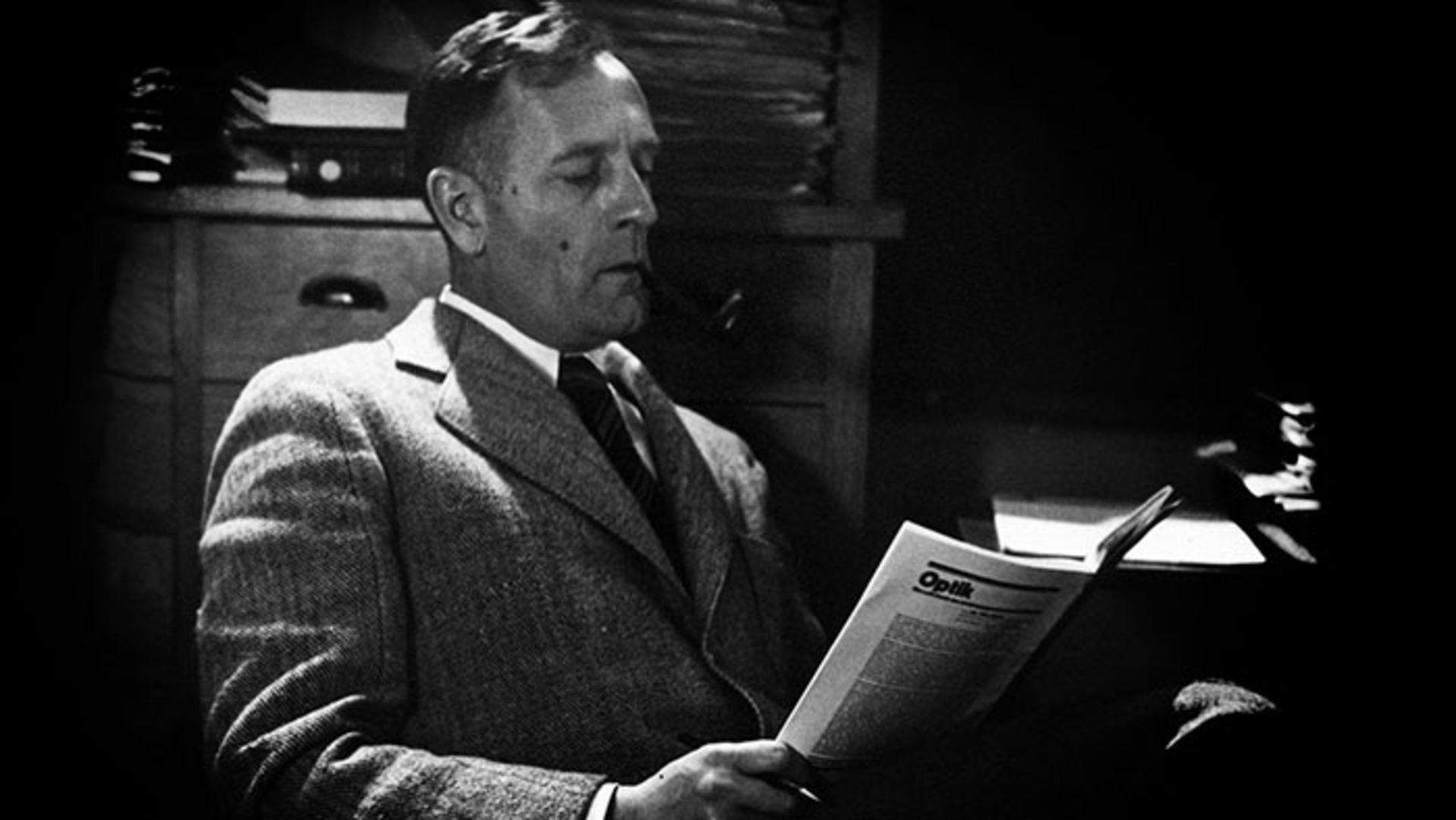
Birth and education
Edwin Hubbell was born on November 20, 1889, in Marshfield, Missouri. His mother was Virginia Lee James and his father was John Powell Hubble. His father was a lawyer and insurance businessman. Edwin was the third child out of 8 children in this family. Of course, like many children of those years, some of Edwin’s siblings died in childhood.
Hubbell lived in a rich family that had to migrate many times because of his father’s work style. During these trips, which were generally in cities around Chicago and Illinois, they lived in luxurious houses with many servants. The children of the Hubble family were all brought up with work and responsibility; Because their parents believed that this style of upbringing would increase their sense of responsibility.
Edwin Hubble was very interested in sports as a child and teenager
As a child, Edwin struggled to keep up with his older siblings and students, so he learned to read before school. He was very fond of adventure books by Jules Verne and H. Rider Haggard. Edwin’s grandfather was an amateur but enthusiastic astronomer. At the age of 7, he got acquainted with one of his grandfather’s telescopes and had his first experience of space exploration. The interesting thing is that instead of participating in the celebration, he observed the space with this telescope on his 8th birthday.
Hubble completed his high school education at Wheaton High School near Chicago. He finished high school easily and with excellent grades in English, mathematics, biology, chemistry, physics, Latin, and German languages. Of course, in high school, Edwin was more into sports than studying, and he owed his high grades to his innate intelligence. On his father’s advice, he was busy delivering goods on holidays. Finally, Edwin Hubbell graduated from high school in 1906 at the age of 16 and received a scholarship to the University of Chicago. He worked at this university as a laboratory assistant of the famous physicist Robert Millikan (Nobel Prize winner).

Edwin Hubble (left), with friends after returning from Oxford
After entering the university, sports still occupied a large part of Hubble’s time. He was fond of sports such as basketball and boxing. He was a tall and strong person and he left several records during his university days. Edwin Hubble graduated from the university in 1910 with a bachelor’s degree in general science and honors in physics and astronomy.
After graduating from the University of Chicago, Hubbell entered Oxford University with a Rhodes scholarship and studied there for three years. Hubble was quickly influenced by English culture and changed many of his past behaviors and habits and adopted an English appearance. Contrary to his strong interest in experimental sciences and especially astronomy, he chose the field of law theory out of respect for his father and graduated from Oxford in 1912. He stayed at this university for another year and studied Spanish. While studying at Oxford, Hubble had another achievement including traveling around Europe. In these trips, in addition to having fun, he paid special attention to planning and thinking about his future. In those years, Edwin wrote in a letter to his mother:
Work is pleasant when it is for a great purpose and end. A goal so great that the thought of it and the anticipation of its achievements, will remove all the fatigue of the difficult task. When I find the purpose and principles I want, I leave everything for it and dedicate my life to it.
Edwin’s father died in the fall of 1912. He asked his father for permission to leave Oxford to visit him but was refused. Young Edwin remained in Oxford and his father died in January 1913.
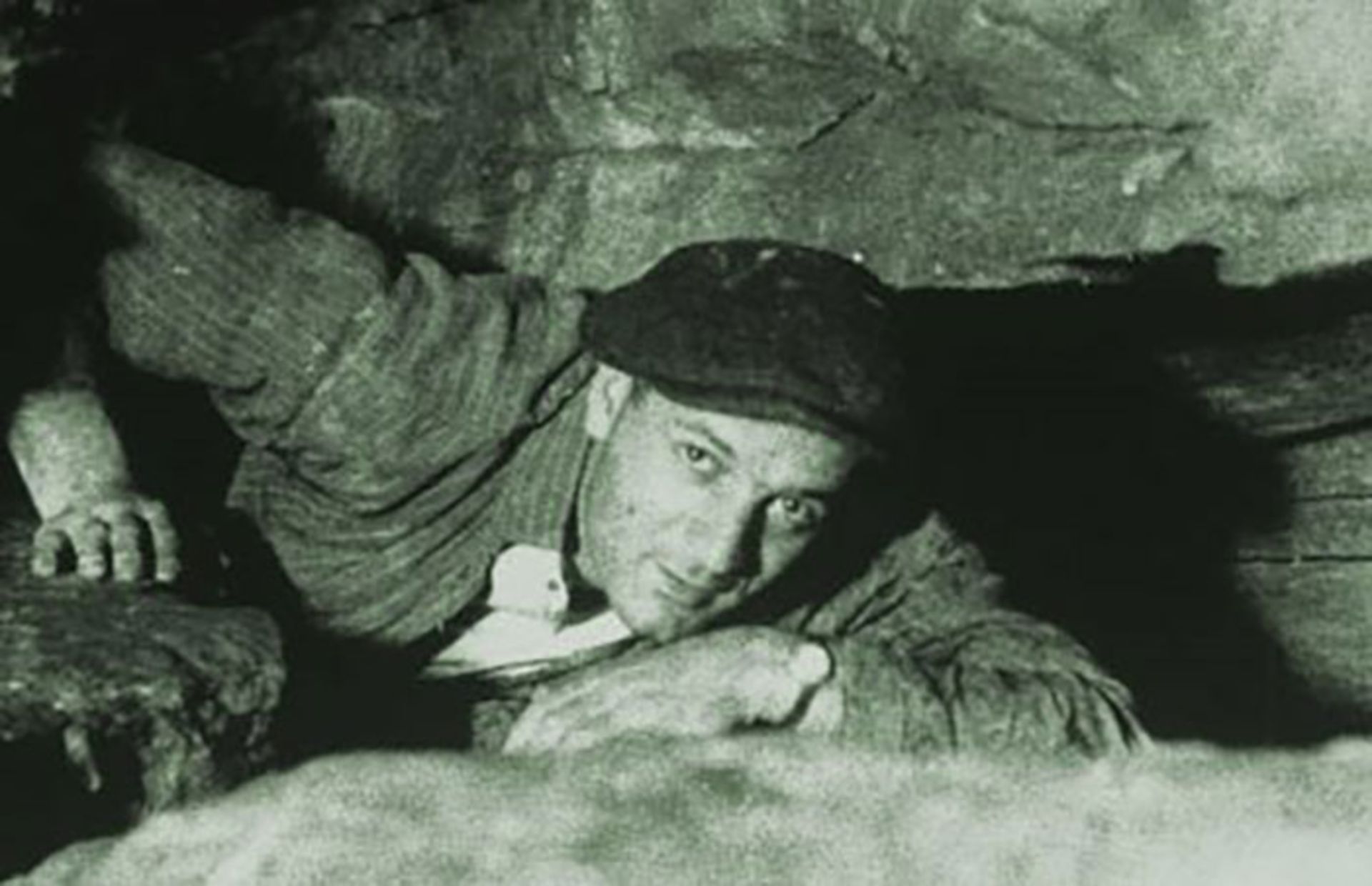
Hubble exploring the cave
His Career
Hubble’s first job was teaching high school Spanish and physics.
Edwin Hubble returned to America in the summer of 1913. He was employed as a Spanish and Physics teacher at New Albany High School in Indiana. In addition, he coached the school’s basketball team and had a part-time job as a German translator. Although Hubble was a popular teacher, he did not enjoy his job. For this reason, he corresponded with Forrest Ray Moulton, professor of astronomy at the University of Chicago, and asked him for advice on collaborating on astronomy projects and higher education in this field. Moulton also introduced Hubble to Edwin Frost, director of the Yerkes Observatory in Wisconsin. In his letter, he introduced Hubble as a hardworking person, enthusiastic about science, and useful to Frost.
Finally, at the age of 24, Edwin entered the field of science, which he had become interested in nearly two decades ago by observing space through the lens of his grandfather’s telescope. Upon entering the observatory, he began his doctoral course in astronomy and received his degree in 1917 with a thesis entitled Photographic Investigations of Faint Nebulae. With the outbreak of World War I, Hubble served in the army for a year and rose to the rank of colonel despite not being actively involved in combat. He then went to Cambridge University to study astronomy.
Edwin Hubble started working at the Mount Wilson Observatory in California in 1919 at the age of 30. This observatory is famous for its excellent weather and excellent observation conditions. These factors made Hubble research in this place until the end of his life.

Hubble membership card in the army
Scientific achievements
As mentioned, Hubble wrote his doctoral dissertation on nebulae. He continued his research at Mount Wilson using the world’s largest telescope, the Hooker telescope. Hubble’s great discoveries, including galaxies beyond the Milky Way and the phenomenon of redshift, were the results of this astronomer’s research using the Hooker telescope.
In 1912, the American astronomer Henrietta Leavitt published an important discovery related to stars called the Cepheid variable. Beginning in the 1930s, Hubble was able to discover similar stars in nebulae using the Hooker telescope. While studying the Andromeda Nebula, he realized that these stars are very far from Earth and much farther than the stars of the Milky Way.
The discovery of other galaxies and the greatness of the universe was the greatest achievement of this scientist
Eventually, Hubble discovered that the Andromeda Nebula is actually a galaxy. Until then, most astronomers believed that the Milky Way and the Universe were a single entity. Hubble discovered that the universe is much larger than the Milky Way and consists of “island universes”. His findings in this historical discovery are summarized as follows:
- His high-quality images of Andromeda and the Triangulum Nebula showed a massive cluster of stars.
- Many of the stars were of the Cephasian type.
- The studied nebula is one million light years away from Earth. 4 times more than all the objects that had been discovered until that time. (Of course, this distance is proven to be equal to 2.5 million light-years today.)
- The diameter of the Andromeda Nebula is 30 thousand light years. (Today, these dimensions have been proven to be 220,000 light years.)
- Andromeda galaxy emits light equal to one billion suns of our system.
Hubble published his findings three days after his 35th birthday. Of course, his discoveries were not published in a scientific journal, but in the New York Times. The results of his research were debated among astronomers for some time, and finally, his paper was reviewed at the meeting of the American Astronomical Society on January 1, 1925. Hubble changed everyone’s view of the universe with his discoveries. He proved that our vast galaxy, host to the Sun and hundreds of billions of similar stars, is only one of the billions of galaxies in the universe.

Andromeda Galaxy
In addition to this discovery, Hubble provided a standard for classifying galaxies that was used by astronomers for years.
Redshift phenomenon
Prominent astronomer Veslu Slifer has also researched nebulae. He stated in his report in 1913 that the light of the nebula tends towards the red color of the color spectrum. He explained his discovery as a form of the Doppler effect. According to the same explanation, the light tends to the red side of the color spectrum as the emission source moves away, similar to the Doppler effect. To test his discovery, Slifer studied many nebulae. He came to the conclusion that the light of many of these nebulae has a fast transition towards red color and as a result, they are moving away from Earth at a high speed.
Hubble stated that galaxies are moving away from each other at high speed
In 1929, using Slifer’s findings and combining them with his own discoveries and his assistant Milton Humson’s, Hubble was able to find an explicable relationship between galaxy distance and redshift state. He recorded his findings in a formula known today as Hubble’s law. This formula is displayed as v = Hr, where v is the velocity, r is the distance, and H is Hubble’s constant. This constant was first named as 530 by Hubble, but today, using advanced research and tools, the exact number is 70.
The world is expanding
One of the main interpretations of Hubble’s law is that we live in an expanding universe. Of course, Hubble himself believed that there is not enough credible evidence to prove this interpretation of the redshift effect. The remarkable point is that although Hubble drew the attention of the scientific community to this law, the law was discovered two years earlier by Georges Lemaitre. In fact, Lemaitre’s interpretation of this law is more accepted by new cosmologists; Because he used Einstein’s law of relativity for his interpretation.
However, Hubble’s point of view was quite logical. He believed that the theory of red shift can only be accepted as a proof of the expansion of the universe when the density of matter in the universe is much higher than the amount discovered up to that time. These statements have been the basic foundations for the proof of dark matter in the universe. Hubble said about the density of materials needed to prove the effect of redshift:
The required density of matter is several times higher than the estimated maximum density of matter concentrated in the nebula. Furthermore, we have no evidence of significant interstellar matter increasing the density.

Classification of galaxies by Hubble
However, although Hubble had a lot of resistance to accept the effect of redshift, in his research he found that the speed of this expansion is slowing down. However, these findings and research on the speed of galaxy expansion are still ongoing and astronomers discover new issues every day.
One of the historical events regarding the theory of the expanding universe is Albert Einstein’s meeting with Edward Hubble in 1931. The two met at Mount Wilson Observatory. In 1917, in his theory of relativity, Einstein considered the universe to be constant and without change in size. He did not see any end or end to the universe. Although his research showed signs of the expansion of the universe, this scientist tried to deny it by determining a constant called the cosmic constant.
However, the January 1931 meeting earned Hubble the nickname of the man who forced the world’s smartest man to change his mind. This meeting caused Einstein to call his previous calculations the biggest mistake of his scientific life, and as a result, Hubble’s findings became the center of attention in scientific circles.
The Big Bang theory is influenced by the findings of this scientist about the expansion of the universe
In 1935, Hubble discovered the 1373 asteroid named Cincinnati. A year later he published the book ” The Realm of the Nebulae “. This book is a historical interpretation of his experiences and research on intergalactic astronomy. With the outbreak of World War II, Hubble once again served in the US Army at the Aberdeen Proving Ground. He was in charge of the ballistics research department in this area. His extensive research resulted in several improvements in the power of ballistic bombs and projectiles. One of his major practical achievements in this research was the improvement of ballistic projectile components, which resulted in a high-speed camera to study the characteristics of the bomb after launch. After the war, Hubble returned to Mount Wilson and spent some time at the Palomar Observatory in California.

Edwin Hubble in old age
In addition to scientific research, Edwin Hubble worked hard to convince the Nobel Prize Society to add astronomy to the award’s branches. He intended to add this science to this event as an independent subsection of physics. He believed that the efforts of astronomers in stellar physics should be appreciated. Unfortunately, after Hubble’s death, this society decided to appreciate this science as a branch of physics.
Personal life and death
Edwin Hubbell married Grace Burke Leib in 1924 at the age of 34 . They had no children. One of Hubble’s pastimes was collecting books. He was generally interested in books related to the history of science. In addition to scientific research, Hubble was also a member of the Board of Trustees of the Huntington Library in San Marino. The discovery of distant galaxies made him so famous that in 1948 his picture appeared on Time magazine. He and his wife had a close relationship with Hollywood stars and artists such as Aldous Huxley.
In 1949, at the age of 59, Edwin Hubbell suffered a heart attack while on vacation in Colorado and was nursed back to health by his wife. Of course, after this incident, the intensity of his research activities decreased until he died on September 28, 1953, due to a blood clot in the brain. He had willed that his burial place should not be known and personal notes were also destroyed by his wife. Grace also died in 1980 and was buried in a secret place next to her husband.
Awards and honors
The Cleveland Newcomb Prize was awarded to Edwin Hubble in 1924. In 1938, he was awarded the Bruce Medal, and a year later, he was awarded the Franklin Medal Science and Engineering Award by the Franklin Institute in Philadelphia. The Gold Medal of the British Royal Astronomical Society was awarded to this legendary astronomer in 1940. The Legion of Honor, which is a military award from the US Armed Forces, was awarded to him in 1946 for his research in the field of ballistics.

Hubble Space Telescope
After the death of Edwin Hubble, in addition to the aforementioned awards, other honors were also registered to pay tribute to this American scientist. The Missouri City Hall of Fame inducted Edwin Hubbell in 2003. In 2008, a commemorative stamp was printed in the name of this scientist, and in 2017, the Indiana Basketball Hall of Fame registered Hubble’s name.
Asteroid number 2069 and a hole in the moon are among the celestial objects that are registered in the name of this scientist. A planetarium at Edward R. Morrow High School in Brooklyn was also named after this scientist, and a street in Missouri was named after Edwin Hubble.
Certainly, the most famous monument of Edwin Hubble is the Hubble Space Telescope, which was launched in 1990. The main purpose of launching this telescope was to accurately calculate Hubble’s constant in his famous formula. Anyway, astronomers with this telescope first considered the number 72 as a constant in 2001, and then in 2006, by studying the microwave background of the galaxy, they reached the exact number 70. In addition, the Hubble telescope made it possible to observe not only the expansion of the universe but also the acceleration of this expansion. Today, the force that caused this expansion is called dark energy in scientific documents.


Can telescopes see astronaut footprints on the moon?
In the early 2000s, when there were occasional people who believed that the moon landing was a hoax, the argument was made that if NASA’s Hubble Space Telescope was powerful enough to see the tiny details of distant galaxies, why couldn’t it take the shoes of the Apollo astronauts on the moon?
The aforementioned argument, like many conspiracy theories, seems convincing on the surface; But with the slightest scrutiny, it loses its value. Those who are fooled by this claim are wrong about two things: how telescopes work and how big space is.
Astronomer Phil Platt explains on the Scientific American website that many people think a telescope’s job is to magnify images. Of course, manufacturers of cheap telescopes like to advertise them this way, printing statements like “150x magnification power” in big letters on the box of the telescopes, along with very misleading pictures of much larger telescopes. Although magnification is important, the true power of a telescope is in its resolution. This difference is subtle but very important.
Magnification is how much you can focus on an object and make it appear larger. This is important because while astronomical objects are physically very large, they are very far away and thus appear small in the sky. Magnifying them makes them easier to see.
Magnification is important, but the true power of a telescope is in its resolution
On the other hand, clarity or resolving power is the ability to differentiate between two objects that are very close together. For example, you might think of two stars orbiting each other (a binary star) as one star; Because their distance is very small and the naked eye cannot distinguish them. But if you look at them with a higher-resolution telescope, you may be able to see that they are two separate stars.
Isn’t that the Zoom? No; Because zooming in only makes everything bigger. This can be easily illustrated with the following image: zoom in as much as you want on the image, but once you pass a certain limit, you only enlarge the pixels and get no new information. To overcome this obstacle, you need to have high resolution rather than zoom.
 Hubble Space Telescope image of the Apollo 17 landing area in the Taurus-Lytro Valley of the Moon. This image lacks the necessary resolution to show the traces of the moon landing or the movement of astronauts on the moon.
Hubble Space Telescope image of the Apollo 17 landing area in the Taurus-Lytro Valley of the Moon. This image lacks the necessary resolution to show the traces of the moon landing or the movement of astronauts on the moon.
The problem is that resolution depends on the telescope itself, meaning that a dramatic increase in resolution usually requires a much larger telescope; But no matter how big your telescope gets, it will still have limited resolution.
When light from an infinitesimal point, such as distant stars, passes through a telescope, the light is slightly scattered within the telescope’s optical instruments (mirrors or lenses). This fundamental property is called light diffraction and is unavoidable. The resolution of telescope images depends partly on the size of its mirror or lens. The larger the telescope’s light-gathering instrument, the higher its image resolution.
The way light propagates in optical equipment depends on wavelength, with shorter wavelengths producing higher resolution. So two nearby blue stars may be distinguishable in a telescope, while two red stars at the same distance may not be distinguishable.
When deciding on the size of a telescope’s camera pixels, astronomers must consider the wavelength they want to observe. Otherwise, they just magnify the noise; Like the previous example about zooming too much on the photo.
All these lead to an amazing result. The Hubble Space Telescope has a mirror with a diameter of 2.4 meters and the James Webb Space Telescope (JWST) has a mirror with a diameter of 6.5 meters. Therefore, the resolution of the James Webb telescope images can be expected to be much higher. At some wavelengths, it is: the shortest wavelength that the James Webb Space Telescope can see is about 0.6 microns (what our eyes perceive as orange light), and the resolution is technically much better than that of the Hubble image.
However, the James Webb Space Telescope was designed as an infrared telescope. At those wavelengths, say around two microns, the resolution is comparable to what Hubble can see at visible light wavelengths. In the mid-infrared, i.e. wavelengths of 10 to 20 microns, the resolution of the James Webb Space Telescope images is even lower. However, because the James Webb is the largest infrared telescope ever sent into space, it can provide the sharpest images we’ve ever had at these wavelengths.
 No telescope on Earth or in low Earth orbit can capture an image like this, a high-resolution view of a boot on the moon’s surface.
No telescope on Earth or in low Earth orbit can capture an image like this, a high-resolution view of a boot on the moon’s surface.
Astronomers measure resolving power as an angle on the sky. From the horizon to the highest point of the sky is 90 degrees and each degree is divided into 60 arc minutes and each arc minute into 60 arc seconds. For example, the angular diameter of the moon from our point of view in the sky is about half a degree. That is, if we look at the moon from the Earth, the moon in the sky occupies a space equal to half a degree of the full circle of the sky, which is equivalent to 30 minutes of arc or 1800 seconds of arc.
The maximum resolution of a telescope refers to the smallest angular distance between two objects that the telescope is able to distinguish as two separate objects. This resolution is expressed as an angle.
At its best, the resolution of the Hubble telescope is about 0.05 of an arc, which is considered a very small angle. But the amount of detail Hubble is able to see depends on the distance and physical size of the target. For example, 0.05 seconds of arc is equivalent to the apparent size of a small coin that can be seen from about 140 km.
In this way, we return to the discussion of conspiracy theorists and their claims regarding the observation of astronaut footprints on the moon. Galaxies are usually tens of millions or even billions of light years away from Earth. At those distances, the Hubble telescope can distinguish objects with dimensions of several light years (i.e. tens of trillions of kilometers) with its best resolution. So even though it looks like we’re seeing galaxies in great detail in those amazing Hubble images, the smallest we can see is still pretty big.
At the same time, the moon is only about 380 thousand kilometers away from us and from the Hubble telescope. At this distance, the resolution of the Hubble telescope is surprisingly limited, unable to resolve objects smaller than about 90 meters. As a result, not only can we not see the astronauts’ footprints in the Hubble images, but we can’t even see the Apollo moon landings, which are about four meters across. Hubble’s resolution at this distance is so limited that it cannot distinguish details smaller than about 90 meters, so it is not possible to see objects smaller than this on the Moon.
 An image of the Apollo 11 landing site captured by NASA’s Lunar Reconnaissance Orbiter (LRO). Although the LRO telescope uses much smaller lenses than the Hubble Space Telescope, its proximity to the lunar surface has made it possible to see details such as the Apollo 11 lunar lander and astronauts’ footprints.
An image of the Apollo 11 landing site captured by NASA’s Lunar Reconnaissance Orbiter (LRO). Although the LRO telescope uses much smaller lenses than the Hubble Space Telescope, its proximity to the lunar surface has made it possible to see details such as the Apollo 11 lunar lander and astronauts’ footprints.
In the images taken by the Nass Lunar Reconnaissance Orbiter (LRO), we can see the moon landings and the footprints of the astronauts. Although the camera of this orbiter has a mirror with a diameter of only about 20 cm, the spacecraft is in lunar orbit and passes the Apollo landing sites at an altitude of 50 km.
The reason NASA’s Lunar Reconnaissance Orbiter can see more detail on the surface of the moon is because it is so close to the surface of the moon. This is why we send probes to planets: it allows us to get much better pictures of them. Sometimes, there’s no substitute for being there.
The lesson we learn from this topic is that the way tools actually work is often more complex and different than we expect. Furthermore, claims that may seem reasonable fall apart with a little scientific scrutiny. If a telescope is only advertised based on magnification, it’s best not to buy it and look for other options. It may seem difficult, but with a little determination, you will succeed.


Do animals have an understanding of the concept of death?


What is Kali Linux? Everything you need to know about this popular but mysterious distribution


Sony Brand Story; From the production of rice cookers to becoming one of the most famous companies in the world


How did the people of the past imagine the future?


Mammoth and dodo return to nature


Canopus; What do we know about the second brightest star in the sky?


How to use iMessage on Android?


Can humans endure the psychological torment of living on Mars?


Xiaomi Glorimi M2 Max watch review; Alternative economic option for iPhone owners


Artificial intelligence problems; Frauds based on artificial intelligence and methods to deal with them
Popular
-



 Technology1 year ago
Technology1 year agoWho has checked our Whatsapp profile viewed my Whatsapp August 2023
-



 Technology1 year ago
Technology1 year agoSecond WhatsApp , how to install and download dual WhatsApp August 2023
-



 Technology1 year ago
Technology1 year agoHow to use ChatGPT on Android and iOS
-



 AI2 years ago
AI2 years agoUber replaces human drivers with robots
-



 Technology1 year ago
Technology1 year agoThe best Android tablets 2023, buying guide
-



 Technology1 year ago
Technology1 year agoThe best photography cameras 2023, buying guide and price
-



 Humans2 years ago
Humans2 years agoCell Rover analyzes the inside of cells without destroying them
-



 Technology1 year ago
Technology1 year agoHow to prevent automatic download of applications on Samsung phones
